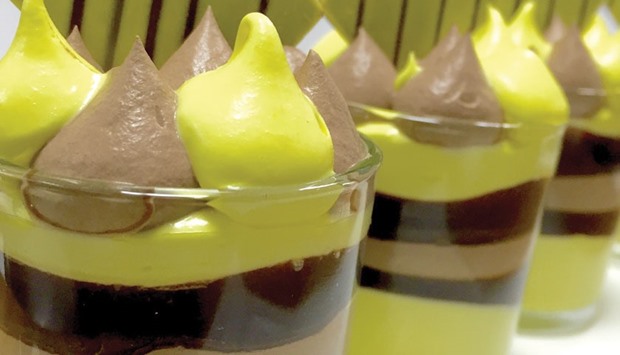
Mango Choco Mania. Photo by the author
During my recent visits to some hypermarkets in the last few weeks, I have noticed additions to their fruits section — multiple varieties of the “king of fruits,” the mango.
Yes, the season of delicious mangoes is here. Mango, as we all know, is arguably the most popular fruit across the globe. Mango lovers always wait every year for their arrival and jump with joy once they taste the heavenly juicy mango pulp.
My wife and son are real mango lovers and are so happy to relish different varieties of mangoes. The fruit was first cultivated in India and is the national fruit of the country.
Initially mango cultivation spread to Southeast Asian countries and travelled to USA in 1800. Portuguese explorers introduced mangoes to Africa and South America. India is the world’s largest producer of mangoes; China, Thailand, Brazil and Mexico also cultivate this highly-prized fruit. Mangoes are in the same family of plants as cashews and pistachios. The tropical mango-bearing tree can grow up to 100 feet and takes 10 years to mature and produce the first yield. According to Indian beliefs, mango and its tree symbolises life, thus the fruit and its leaves are used in all festivals, birth and wedding rituals.
One very nice thing about mango plantations is the numerous times it finds a mention in kids’ storybooks, and how kids used to enter the plantations and pluck ripe mangoes from a tree and savour them. Mango chutney is in fact so delicious that one European guest used to dine in my restaurant just to taste the mango chutney we used to serve along the meals.
Mangoes are oval in shape and are approximately 4-5 inches in length; they are usually heavy in comparison to their volumes due to a large single seed in the centre of the pulp. Their colour varies from greenish yellow to reddish yellow depending on tier variety and how ripe they are. The fruit pulp surrounding the seed is succulently sweet, fresh and juicy with the right amount of tartness.
How to choose a right mango
I’ve experienced people vouching for their own methods to identify a sweet and ripe mango, but the rule that I follow is to press gently on the skin with your thumb. If it’s squishy, it is too ripe and if it is too hard it’s not ready yet. Also try to smell the fruity aroma around the stem side. You can store unripe mangoes at room temperature and wrap them in newspaper to speed up the ripening process.
Apart from its heavenly taste, I’ll give you plenty of other reasons to include this “King of Fruit” in your diet. The presence of antioxidants in mango helps you resist against cancer and also boosts your immunity to fight against other diseases.
The fibrous nature of the fruit keeps your digestive tract clear and also aids in digestion due to some enzymes present in it like papaya, which are soothing to the stomach. The high levels of Vitamin C, pectin and fibre present in it keeps bad cholesterol under check and helps reduce it. Vitamin E gives our skin the nourishment and helps maintain a healthy glow. Seasonal mangoes are perfect snacks — rather than munching on unhealthy chips, fried snacks and cookies, why not feast on fresh mango slices and maintain your health.
You can also make your own mango dehydrated slices and buy them; believe me they are the best tasting dehydrated fruits. You can also make homemade beauty mask by applying ripe mango pulp to your face for that natural glow to your skin.
Mango Choco Mania
Ingredients
For mango mousse
Ripe mango 2 no
Green Cardamom 4-5 pods
Sugar 2 tbsp
Salt a pinch
Whipping cream 100 ml
Gelatin powder ½ tbsp
For chocolate ganache
Dark chocolate 100gm
Cooking cream 100ml
Garnish
Mint leaves to garnish
Method
For the chocolate ganache, place the roughly chopped chocolate in a glass bowl and keep aside.
Heat the cooking cream in a heavy bottom pan and bring to boil.
Once the cream boils, remove from flame and pour over the chopped dark chocolate.
Allow to stand for 4-6 minutes and whisk to a smooth consistency.
Strain using a sieve to avoid any lumps and keep aside.
For the mango mousse, remove the mango pulp and blend to a smooth consistency with cardamom seeds and a pinch of salt.
Melt the gelatine with some water on double boiler and add to the mango pulp.
Whisk the cream to aerate it to double its volume.
Combine the mango pulp and the cream using cut and fold method.
Do not overmix to remove the air and make the mixture heavy and remove the air from the cream.
In a serving glass pipe the prepared chocolate ganache in the base.
Pour the prepared mango mousse on top.
Set in refrigerator for 2 hours, serve cold garnished with mint leaves.


